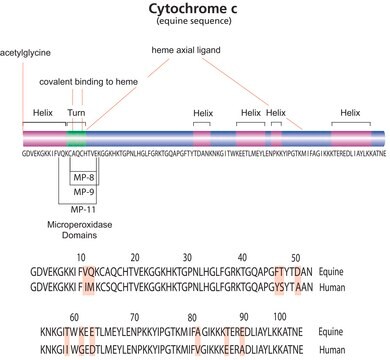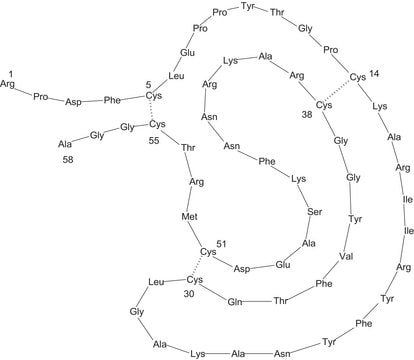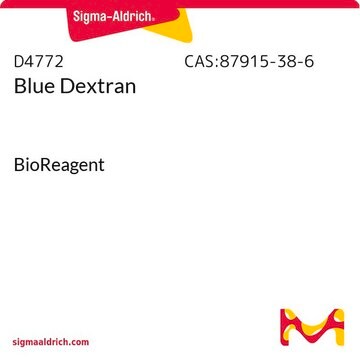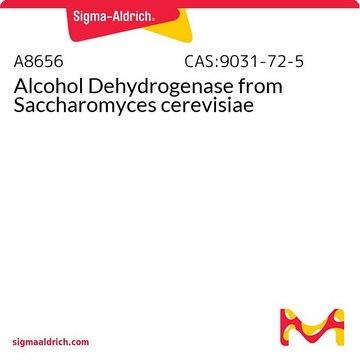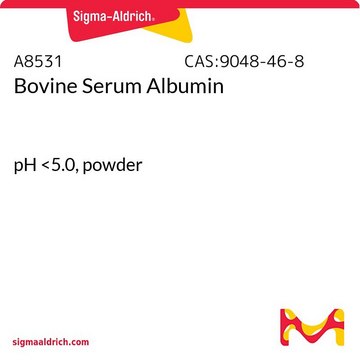C7150
Cytochrome c from equine heart
suitable for GFC marker, BioReagent
Synonyme(s) :
Cytochrome c from horse heart
About This Item
Produits recommandés
Gamme de produits
BioReagent
Niveau de qualité
Forme
powder
Poids mol.
~12,400
Conditionnement
vial of ≥10 mg
Adéquation
suitable for GFC marker
Température de stockage
−20°C
Vous recherchez des produits similaires ? Visite Guide de comparaison des produits
Application
Actions biochimiques/physiologiques
Autres remarques
Code de la classe de stockage
11 - Combustible Solids
Classe de danger pour l'eau (WGK)
WGK 3
Point d'éclair (°F)
Not applicable
Point d'éclair (°C)
Not applicable
Équipement de protection individuelle
Eyeshields, Gloves, type N95 (US)
Faites votre choix parmi les versions les plus récentes :
Déjà en possession de ce produit ?
Retrouvez la documentation relative aux produits que vous avez récemment achetés dans la Bibliothèque de documents.
Les clients ont également consulté
Protocoles
Gel filtration chromatography is an established method for determining the size and molecular mass of proteins.
Chromatograms
application for HPLCapplication for HPLCapplication for HPLCNotre équipe de scientifiques dispose d'une expérience dans tous les secteurs de la recherche, notamment en sciences de la vie, science des matériaux, synthèse chimique, chromatographie, analyse et dans de nombreux autres domaines..
Contacter notre Service technique


